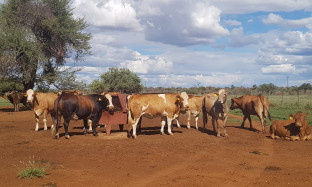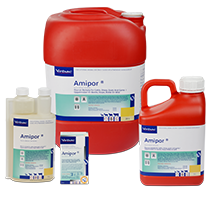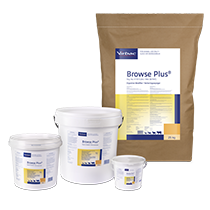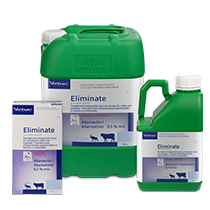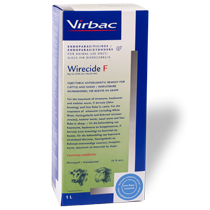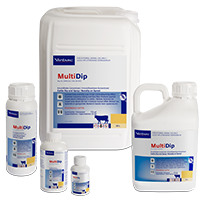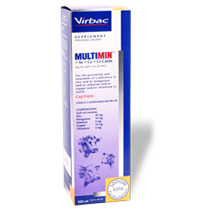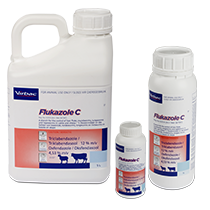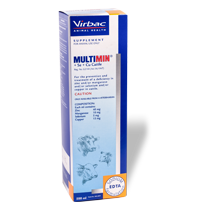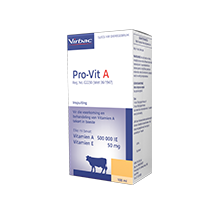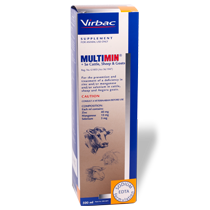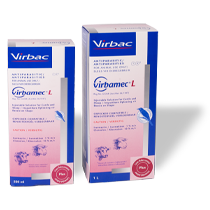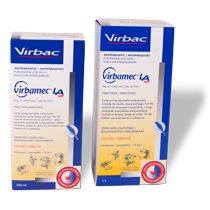
BEEF COW MANAGEMENT PRE CALVING
The last two months before calving is probably one of the most important periods in the production cycle to ensure success.
This not only affects the successful birth of a calf with a strong survivability, but also what happens to the calf and the cow after the birth process, to the success of the coming breeding season and even up to and including weaning time. The following aspects should receive attention:
-
Body Con
dition and Nutrition
It is well known that cows must calve in an acceptable condition score, as it has such a large effect on many aspects that affect production, reproduction and ultimately profitability. A condition score of 3.5 with calving is generally considered ideal (See photos).
It is important to start early with extra supplementation, if cows' condition is not as desired as condition can not be increased overnight! So, start earlier rather than later to improve the condition of cows. Very important - do not let the long winter coat fool you and overestimate condition!
The nutrition / condition of the cows before / during calving is of cardinal importance for the following reasons:
- Development of the unborn calf:
We know that most fetal growth (+-75%) takes place in the last two months of pregnancy. The feeding of the cow during this time must be able to support the proper development the unborn calf AND maintain or increase the condition of the cow. This will benefit the viability of the new born calf - especially during inclement weather conditions at birth.
Although not a common problem, over conditioning during this time can be detrimental. This can lead to an increase in the birth weight of the calves, so that problems with difficult births may occur.
- Influence on the number of days to first heat after calving, re-conception and intercalving period:
Cows should be in the ideal condition against calving to reduce the number of “open days” between calving and conception, and to ensure a good re-conception. See in Table 1 what the effect of condition score with calving is on the time when the cows are “infertile” - ie before they start to cycle. The earlier cows start to cycle and become successfully fertilized, the better (shorter) their intercalving period will be.
Table 1: Influence of condition score with calving on number of “infertile” days after calving (Kunkle et al, 1998)
- Influence on udder development, colostrum quality and milk production:
Nutrition in late gestation has a direct influence on udder development. Udder development again has an influence on colostrum production (quantity and quality), as well as milk production during lactation. NB. All three of these aspects can not be corrected by good feeding conditions after calving!
Table 2: Influence of condition with calving, on the quality of colostrum - as measured in the serum of calves, 24 hours after birth (Odde, 1992)
The quantity and quality of the colostrum can play a decisive role in calf survival after birth. Calves need to get enough colostrum to provide them with important nutrients. In addition, the quality must be such that the calves ingest enough antibodies to get their immune system going and improve calf survival.
With a well-developed udder and with the right condition (nutrition), the cow will be able to produce maximum milk. In the first two months, calves are exclusively dependent on the cow's milk before their intake of grazing becomes significant. At this time, their feed conversion ratio is also the best (1:1 to 2:1), and an optimal growth rate at this early stage can have a positive effect on weaning mass. (Table 3).
Table 3. Influence of condition score with calving on 240 day weaning mass (Houghton et al, 1990)
KT @ CALVING
240 DAY WEANING MASS (kg)
2
170
2.5
209
3
234
3.5
234
With all the above in mind, it is imperative the nutrition of that cows that have a body condition score of 3 to 2.5 or less, 8 weeks before the calving season, needs to be drastically adjusted - especially if there are not yet good grazing conditions (quality and quantity), or prospects for it. The provision of good quality hay or silage, and/or a production lick can help to improve their condition.
Role of a digestive modifier:
If it is not already part of the supplementation, it is highly recommended to include it in the program. During the late winter, not only is the quality of natural grazing very low, but availability of the more desirable species may also be limited. As a result, cattle have to utilize the less palatable plant material, which is also more difficult to digest. As a result, the flow rate through the digestive system is slowed down, intake decreases, animals have fewer nutrients available and their condition decreases - precisely at the time when the cow's nutritional needs increase and condition must be maintained!
The inclusion of a Digestive Modifier (Browse Plus®) can make a difference. It contains a combination of active ingredients that all work together to support the health and functioning of rumen organisms and neutralize the negative effects of tannins, resins and terpenes. This results in improved digestion, increased flow rate and intake. The result is that more nutrients are available for the animal and the loss of condition is limited.
NB. The supplementation of a digestive modifier is complementary to the current supplementation program. It does not contain protein, energy or minerals that are essential to replenish during this time!
-
Vaccination
This period is the last opportunity before calving to administer important vaccines. This is the ideal opportunity to give vaccines that are especially aimed at supporting calf survival after birth, through the transmission of maternal immunity (antibodies via good quality colostrum). Diseases that affect newborns and young calves and can be reduced with vaccination include: Paratyphoid, E. coli, Rota and Coronavirus. In more intensive systems, the administration of a multi-clostridial vaccine may also be beneficial.
-
Trace Mineral and Vitamin Supplementation
This time is the most critical time for trace mineral and vitamin supplementation in the cows. The following factors make this supplementation a necessity:
-
The trace mineral requirement of the cow increases dramatically during late gestation. Not only must the cow provide in her own needs, but also for those of the unborn calf. The fetus is totally dependent on the cow to be born with a good trace mineral status.
-
Even with a good oral supplementation program (licks) in place, the development of a trace mineral gap at this time is very likely, due to the increased need. We know by now very well what the possible shortcomings of an oral trace mineral supplement program could be e.g. the role of antagonism, erratic intake due to limited trough space and dominance in the herd, relatively poor uptake of trace minerals etc.
A further complication during late gestation is that the cow's feed intake is limited due to the rapidly developing fetus which can limit the rumen capacity - especially in the last month before calving.
-
To ensure that the calf is born with an optimal trace mineral status . This can improve the survivability of the calf immediately after birth, as the calf's immune system can function optimally early after birth to optimize immunity.
-
The quality of colostrum. Trace mineral supplementation in late pregnancy can improve the quality of colostrum. It is measured by the amount of immunoglobulins (antibodies) in the colostrum. The immunoglobulins are what set the calf's immune system in motion and cause maternal immunity to develop.
-
To strengthen the immune response of the cow with vaccinations during late gestation. Research clearly points to the benefit of a Multimin® supplementation given simultaneously with a vaccine - even if the cattle do not have suboptimal trace mineral levels during vaccination! This benefit is also transmitted to the calf by the good quality of the colostrum, as discussed above.
-
To ensure that the cow's trace mineral levels do not drop too much with calving. A cow loses about 30% of its trace minerals during calving by means of the calf, the placenta and the amniotic fluid. Therefore, if the cow's trace mineral levels before calving were not optimal, she runs the risk of having lower immunity. This can lead to an increased incidence of post-calving diseases such as retained placenta’s, uterine inflammation, higher somatic cell count (SCC) and mastitis. It can also affect the cow's ability to get back into the cycle as soon as possible after calving.
All of the above factors therefore necessitate the use of a well-balanced and proven injectable trace mineral supplement (Multimin® Se + Cu + Cr) to bridge the trace mineral gap. An injectable trace mineral supplement like Multimin® overcomes all the problems that may be experienced with oral supplementation. This is a certain way to effectively increase the trace mineral status of each cow during this critical time. Do not forget the simultaneous Vit A & E supplementation (synergistic action)!
-
Parasite control
- Internal parasites
If thecows were treated for internal parasites the end of the autumn, they should still be fine for the time being.
However, in liver fluke areas a liver fluke treatment may be an option to prevent cows from having to be treated during the calving season. The liver performs so many essential functions and anything that affects its functioning negatively, such as liver fluke, can result in a ripple effect of negative consequences e.g. poorer condition, lower milk production and reconception.
- External parasites
Pay special attention to the occurrence of lice that can strike at the end of winter when the animals are heavily pregnant and under nutritional stress. Lice cause great irritation and can impair the condition of the cows. In warmer areas, the occurrence of ticks should also be monitored.
-
General Management
A few general management actions that can be addressed during this time are the following:
- If possible / practical, now is a good time to class the cows according to condition or calving herds. (Adjust the feeding of the cows to be at a condition score of at least 3.5 by the start of the calving season ).
- Make sure there is enough space available at lick bins to reduce competition as far as possible. Also make sure that licks are available at all times.
- Work as calmly as possible with pregnant cows to reduce stress. Avoid bruises or injuries during handling that could lead to abortions. Handling facilities must be of such a standard to make this possible. Workers must also be trained to work with the animals as calmly as possible. Cows should be quietly driven to and from the handling facilities. Clean drinking water must be available nearby at all times. If cows have to spend the night in exceptional conditions in the kraal, fresh drinking water and feed (hay) must be available.
- In the meantime, plan the calving camps and make sure that the fences and water supply are in order. If the calves are to be given creep feed, make sure that the feeding troughs and creep gates are in order.
- Watch out for abortions in late pregnancy. Any aborted fetus should be taken to the vet as soon as possible and sent away for examination to try to determine the cause. Especially in first calving heifers, abortions can be an indication of contagious abortion! (Thereafter, the cows usually calve normally)
- Be aware of the occurrence of metabolic disorders such as milk fever in late pregnancy.
- Make sure that the “first aid kit” contains the most important remedies to treat the most common conditions before and during calving:
- Suppositories (antibiotic effervescent pills) to prevent uterine infection after difficult births (Obermycin Foaming Pessaries)
- Remedies to treat diarrhea in newborn calves e.g. electrolytes
- Antibiotics to prevent/treat common infections - tetracycline (Terralon LA) or sulfa (Sulmetrim Plus NF) based drugs as first line treatment.
- Inflammatory drugs (relieving pain and fever) - only available from your veterinarian
- A drug to treat milk fever
- An iodine preparation to prevent umbilical cord infections - especially when calving in kraals or confined areas (Oberdine Wound, Eye and Footrot Spray)
- Disposable syringes and needles
- Plastic gloves for use during difficult births

